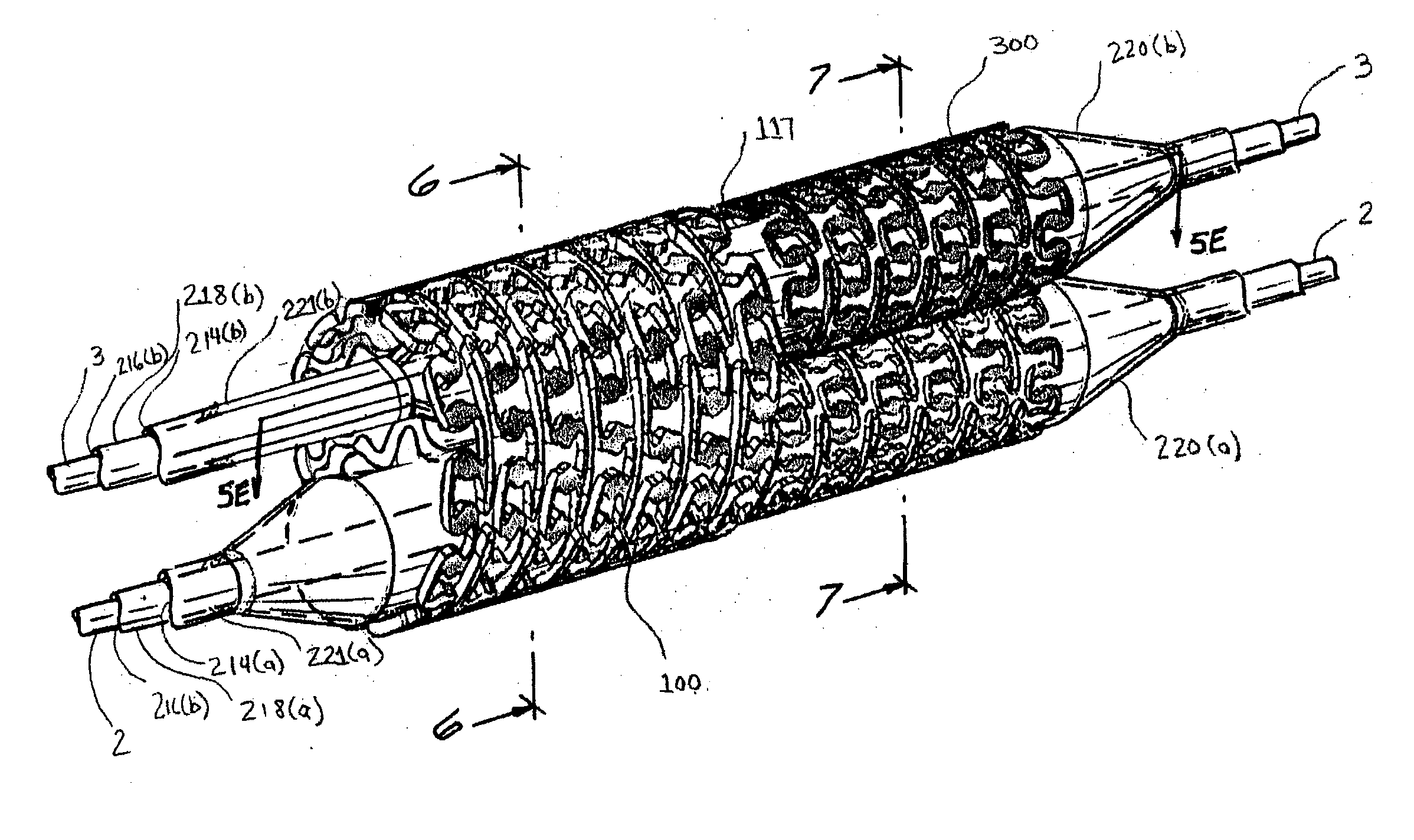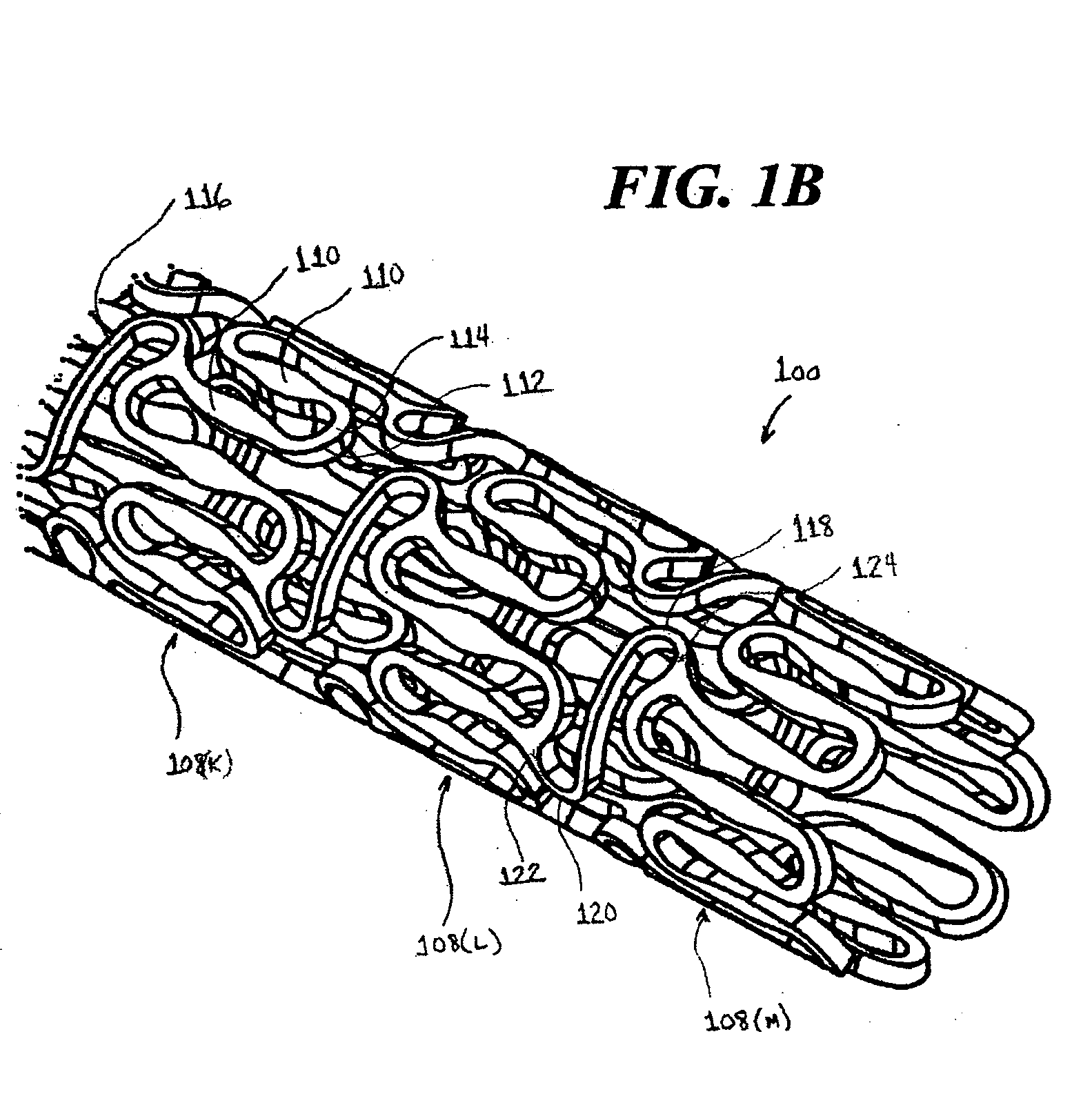Apparatus for treating a bifurcated region of a conduit
- Summary
- Abstract
- Description
- Claims
- Application Information
AI Technical Summary
Benefits of technology
Problems solved by technology
Method used
Image
Examples
Embodiment Construction
[0043] An apparatus, system and method for treating a diseased conduit of a human body at a bifurcation will be described with reference to the FIG. 1A shows a first stent 100 and a second stent 300 that may be placed within a conduit, for example at a vessel bifurcation. Although FIG. 1A shows stent 100 and 300 to be substantially similar, it is important to note that each of stents 100 and 300 may have different characteristics. For example, stents 100 and 300 may be constructed from different materials, have different geometries and / or be coated with or have different agents embedded therein. In particular, stent 100 may be a bare metal stent while stent 300 is a polymeric stent coated with a therapeutic agent or having the therapeutic agent embedded in its polymer matrix. Additionally, stent 100 may be coated with a therapeutic agent, but have a wider diameter or geometry, the characteristics of which are discussed in greater detail below, than stent 300.
[0044] For ease of desc...
PUM
 Login to View More
Login to View More Abstract
Description
Claims
Application Information
 Login to View More
Login to View More - R&D
- Intellectual Property
- Life Sciences
- Materials
- Tech Scout
- Unparalleled Data Quality
- Higher Quality Content
- 60% Fewer Hallucinations
Browse by: Latest US Patents, China's latest patents, Technical Efficacy Thesaurus, Application Domain, Technology Topic, Popular Technical Reports.
© 2025 PatSnap. All rights reserved.Legal|Privacy policy|Modern Slavery Act Transparency Statement|Sitemap|About US| Contact US: help@patsnap.com



